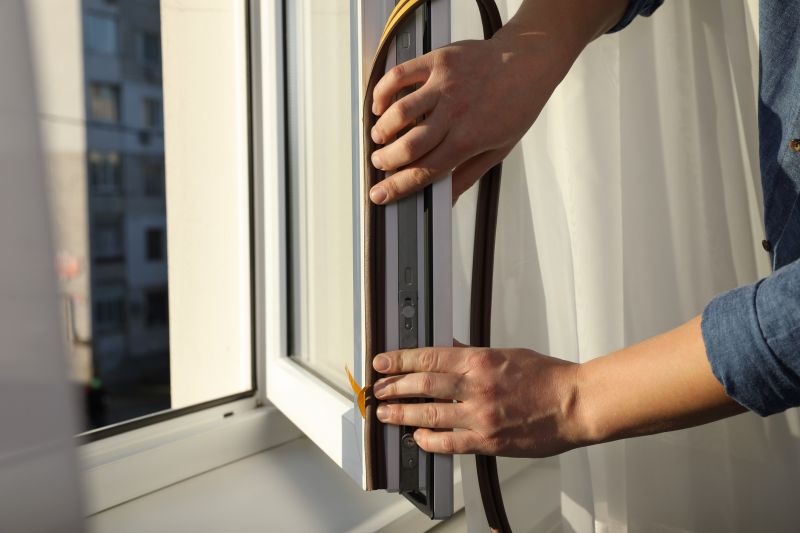Essential Noise Insulation Products for Townhouse Soundproofing Projects
Learn about key insulation solutions that effectively block noise and improve acoustic privacy in townhouse interiors.
 Townhouse living often presents unique challenges when it comes to managing noise transmission between units. Proper insulation can significantly reduce sound transfer, creating a more comfortable and peaceful environment. Various products are available to address these needs, ranging from wall treatments to floor and ceiling solutions. Selecting the right noise insulation products involves understanding the different types of materials and their specific applications within a townhouse setting.
Townhouse living often presents unique challenges when it comes to managing noise transmission between units. Proper insulation can significantly reduce sound transfer, creating a more comfortable and peaceful environment. Various products are available to address these needs, ranging from wall treatments to floor and ceiling solutions. Selecting the right noise insulation products involves understanding the different types of materials and their specific applications within a townhouse setting.
Top Overall Option
Acoustic Insulation Panels
Acoustic insulation panels are versatile and effective solutions for reducing sound transmission within townhouse units. They can be installed on walls, ceilings, or floors to absorb airborne noise and minimize impact sounds. These panels are available in various sizes, thicknesses, and materials to suit different needs and aesthetic preferences, making them a popular choice for both new constructions and retrofit projects.
Types of Products For Townhouse Noise Insulations
Mass Loaded Vinyl (MLV)
A dense, flexible material that blocks sound transmission when installed in walls or floors, ideal for adding an extra layer of soundproofing.
Soundproof Drywall
Specially designed drywall with sound-dampening properties to reduce noise between rooms or units.
Acoustic Foam Panels
Foam panels that absorb sound waves, reducing echo and airborne noise within spaces.
Resilient Sound Clips and Channels
Components that decouple drywall from framing, decreasing sound vibrations and improving overall soundproofing.
Underlayment for Floors
Materials placed beneath flooring to dampen impact noise and reduce sound transfer through floors.
Sealant and Acoustic Caulk
Sealants used to fill gaps and cracks around windows, doors, and wall penetrations to prevent sound leaks.
Resilient Mounts
Mounting hardware that isolates fixtures and appliances from structural vibrations, reducing noise transmission.
Fiberglass Insulation
Common insulation material that also provides some sound absorption when installed within wall cavities.
Mass Loaded Vinyl Barrier Paint
A coating that adds mass and soundproofing qualities to walls and ceilings when applied as a layer.
Acoustic Ceiling Tiles
Tiles designed to absorb sound and reduce noise reverberation within rooms.
Soundproof Door Sweeps
Seals installed at the bottom of doors to block sound from passing through gaps.
Double Glazed Windows
Windows with two panes of glass separated by a space, reducing noise transmission from outside.
Acoustic Wall Panels
Decorative panels that help absorb sound and improve room acoustics.
Floor Underlayments for Impact Noise
Specialized materials installed beneath flooring to dampen impact sounds like footsteps.
Vibration Isolation Pads
Pads placed under appliances or fixtures to minimize vibration noise transmission.
Popular Choices
Widely used for its sound blocking capabilities when added to walls and floors.
Commonly chosen for their ease of installation and sound absorption qualities.
Popular for retrofit projects to enhance existing wall soundproofing.
Frequently selected to reduce external noise infiltration.
Effective for impact noise reduction in multi-story townhouses.
Often used to improve interior acoustics and reduce ceiling noise.
Essential for sealing gaps and preventing sound leaks around openings.
Popular for decoupling drywall and reducing vibration transfer.
Used under appliances and fixtures to minimize vibration noise.
Commonly installed beneath flooring to dampen impact sounds like footsteps.
Effective noise insulation not only enhances privacy but can also contribute to better overall acoustics within individual units. When choosing insulation products, factors such as ease of installation, compatibility with existing structures, and effectiveness at sound dampening are important considerations. Some solutions are designed to be added during initial construction or renovation, while others can be retrofitted into existing spaces.
In addition to traditional insulation materials, there are specialized products like soundproof drywall, acoustic panels, and resilient channels that can be incorporated into walls, ceilings, and floors. These options often work best when combined with sealing techniques to prevent sound leaks through gaps and cracks. Proper installation and the use of multiple layers of soundproofing materials can significantly improve the soundproofing performance of a townhouse.
Investing in quality noise insulation products can lead to a more harmonious living environment, especially in densely populated areas. It is advisable to assess the specific noise issues faced—whether airborne noise, impact noise, or both—and select products accordingly. With a variety of options available, homeowners and builders can tailor solutions to meet their specific needs and budget, ensuring a quieter, more private townhouse experience.
Key Buying Considerations
- Determine whether the primary concern is airborne noise, impact noise, or both to select appropriate products.
- Assess the existing structure to identify gaps, cracks, or weak points where sound may leak.
- Consider the installation process and whether professional help is required or if DIY is feasible.
- Evaluate the thickness and density of insulation materials for their soundproofing properties.
- Check compatibility of products with your existing walls, floors, and ceilings to ensure proper fit.
- Think about the aesthetic impact and whether products need to be concealed or can be decorative.
- Review the fire safety ratings and building codes relevant to your area before installation.
- Budget considerations: balance cost with expected effectiveness and longevity of the products.
- Look for products that offer multi-layer or combined solutions for enhanced soundproofing.
- Consider the ease of future modifications or upgrades if necessary.
